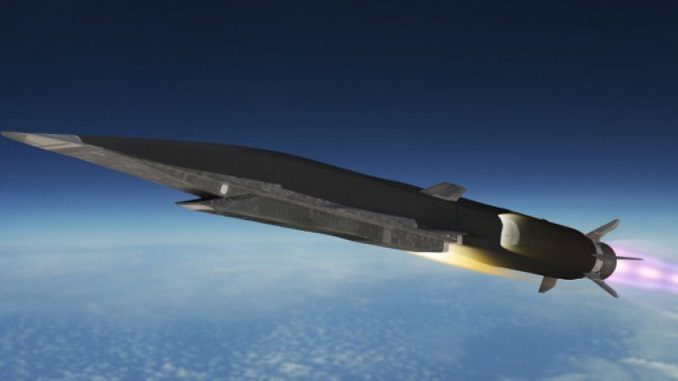
Russia and China are outpacing the United States in the development of super-fast missile technology, Pentagon officials and key lawmakers are warning, The Hill reports.
Russia says it successfully tested a so-called hypersonic missile this month, while China tested a similar system last year expected to enter service soon. “Right now, we’re helpless,” Jim Inhofe, a senior member of the Senate Armed Services Committee, said in advocating for more investment in hypersonics, along with missile defense.
General John Hyten, commander of U.S. Strategic Command, last week described a hypersonic as a missile that starts out “like a ballistic missile, but then it depresses the trajectory and then flies more like a cruise missile or an airplane. So it goes up into the low reaches of space, and then turns immediately back down and then levels out and flies at a very high level of speed.”
In November, China reportedly conducted two tests of a ballistic missile with a hypersonic glide vehicle that U.S. assessments expect to reach initial operating capability around 2020. The country had already conducted at least seven tests of experimental systems from 2014 to 2016, The Hill adds.
Earlier this month, Russian President Vladimir Putin delivered a flashy state of the nation address to tout a slate of new weapons, including a hypersonic missile he claimed was “invincible” against U.S. missile defenses. About a week later, Russia claimed it successfully tested a hypersonic.
Shortly after Putin’s announcement, Washington said it was “not surprised” by the report and assured the public that it is “fully prepared” to respond to such a threat.
However, in congressional testimony last week, Hyten conceded U.S. missile defense cannot stop hypersonics. He said that the U.S. is instead relying on nuclear deterrence, or the threat of a retaliatory U.S. strike, as its defense against such missiles.
“We don’t have any defense that could deny the employment of such a weapon against us, so our response would be our deterrent force, which would be the triad and the nuclear capabilities that we have to respond to such a threat,” Hyten told the Senate Armed Services Committee.
According to The Hill, in addition to the nuclear review, Pentagon officials have been touting budget proposals that would put more money toward hypersonics and missile defense that they say will help close the gap with Russia and China.
Air Force Secretary Heather Wilson, meanwhile, told the House Armed Services Committee last week her fiscal 2019 budget includes $258 million for hypersonics. Defense Advanced Research Projects Agency (DARPA) Director Steven Walker touted his $256.7 million fiscal 2019 budget for hypersonic missile development the same day as Putin’s press conference. Still, he said, DARPA needs more money for infrastructure to test the missiles, as most of the agency’s testing is done out of one facility.

Be the first to comment